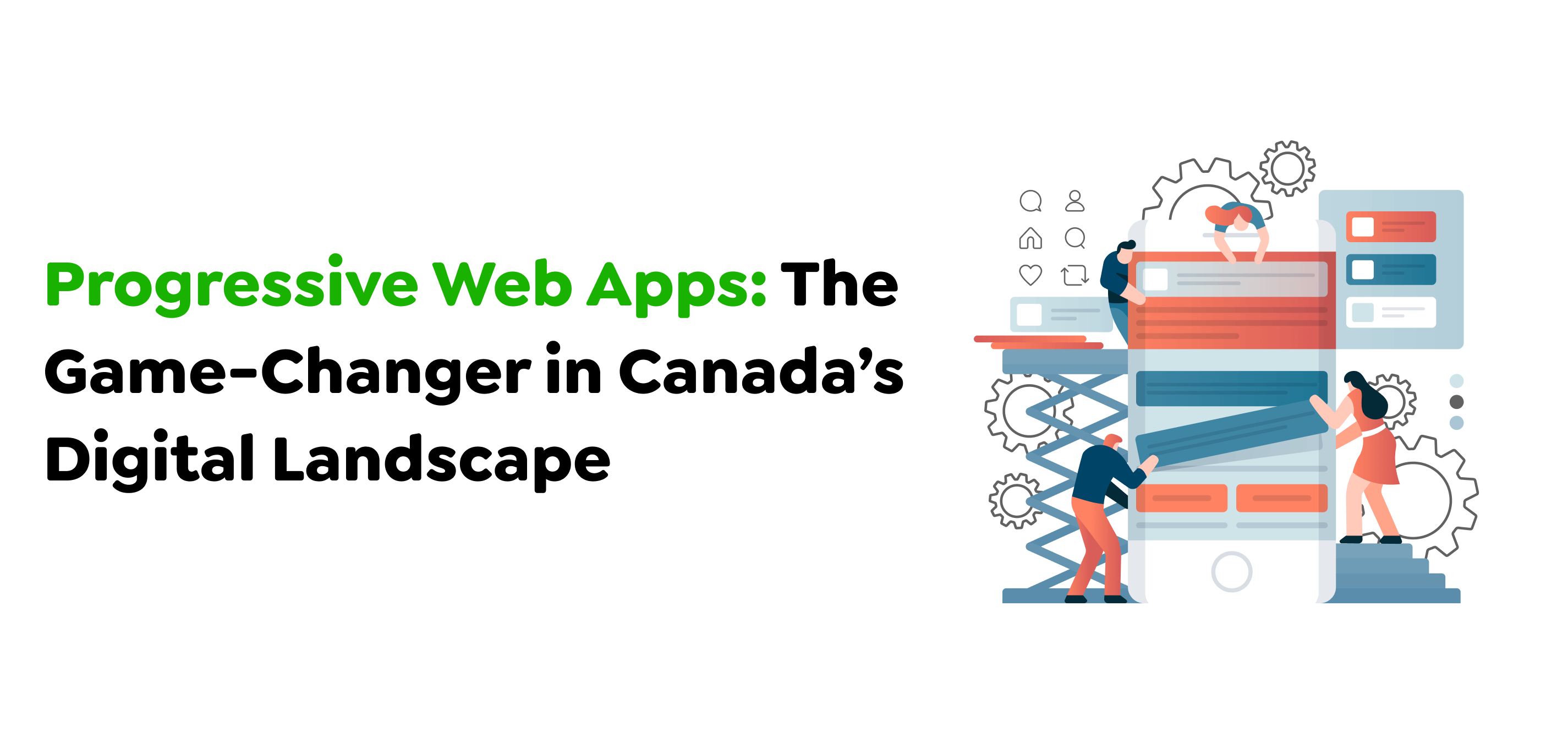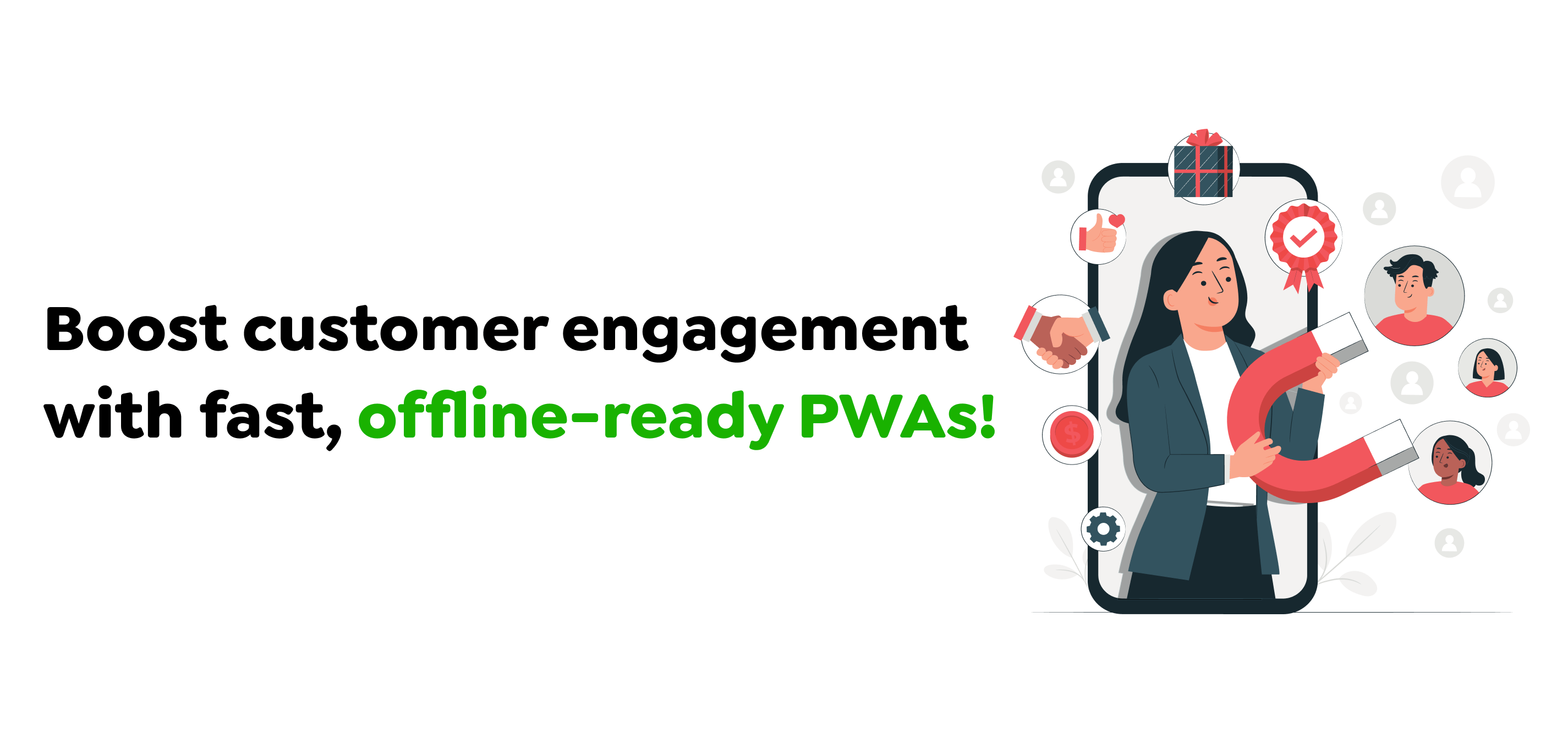21 Aug 2024
How Progressive Web App Development is Transforming Canada’s Digital Landscape
Matthew Connor

In recent years, Canada has witnessed a notable shift towards Progressive Web Apps. PWAs seamlessly integrate web and mobile app features, delivering the best of both worlds. Canadian firms are increasingly embracing Progressive Web App Development to improve user engagement, increase conversions, and enhance website performance.
The advancement of Progressive Web Apps is not a trend in Canada. The firms realised that they can offer faster, more reliable, and engaging user experiences PWAs which are becoming a part of a firm’s overall digital strategy. Due to offline capabilities, push notifications and app-like features delivered from the web, the PWAs are cheaper than native Capps. This is expected to change the dynamics in the mobile app development industry in Canada and open the door for more innovation and new prospects. This blog discusses the benefits and challenges of Progressive Web Apps for companies based in Canada. Further, it goes to the future of mobile application development in the country.
Are you ready to dive in?
If yes, then let’s get started!
Understanding Progressive Web Apps: The Future of Web and Mobile Integration

Progressive Web Apps (PWAs) are optimized websites that create a mobile app-like experience through the web browser. To operate offline, offer push notifications, and load quickly, they use contemporary web technologies. First of all, PWAs do not depend on a certain size of a device, and are, therefore, completely responsive – you can be sure that your experience will be perfect. Customers can install PWAs on their home screens without visiting an app store. This delivers the comfort of a native app without the high development and maintenance expenses. PWAs can also be searched and found on the search engines making them more discoverable and accessible. That is why PWAs are so attractive to enterprises that seek to have a consistent look and feel.
Now let’s discuss how the growing focus on mobile experiences is pushing the adoption of progressive web app development across Canada.
Also Read: The Future of App Development: Why Choose Node.js for Mobile & Web
The Growth of PWAs in Canada

The growing significance of mobile app development and the demand for a solution between Web App and Native App are the reasons behind the adoption of PWA in Canada. PWAs are relatively modern web applications that allow users to interact with an application that runs on a browser. Unlike native and hybrid applications, PWAs are not installed and use such features as service workers and push notifications.
PWAs are employed by all kinds of Canadian enterprises, from start-ups to big firms. For instance, the retailers can engage the users with PWAs by enabling purchasing items stored in the cart and reaching notifications on sales among others. Newspaper media houses for instance can employ PWAs in delivering content more entertainingly. Additionally, the added advantage of the offline mode is the ability to notify the readers of events as they happen. PWAs are changing the ways by which companies can communicate with customers by providing a convenient and stimulating experience. More and more organisations in Canada adopt PWAs, and the distinction between web and native applications gradually fades, which creates new possibilities for development in the digital space.
Moving forward, let’s discuss the advantages of progressive web app development for Canadian firms and how they can change digital strategies.
Benefits of Progressive Web Apps for Canadian Businesses

Progressive Web App Development offer multiple advantages that make them favourably demanding to Canadian businesses:
1. Consistent Cross-Platform Experience:
PWAs operate seamlessly across any device or platform, providing a cooperative experience regardless of the operating system. This cross-platform compatibility stops the demand for enterprises to create numerous app versions, lowering development expenses and facilitating maintenance measures. This advantage is particularly valuable for businesses aiming to reach a diverse audience without investing in separate app versions for different devices.
2. Enhanced Reach and Ease of Access:
PWAs are accessible directly through any web browser, bypassing the need for app store downloads. This accessibility expands the potential user base, making it easier to engage customers who may hesitate to download native apps due to storage limitations or other concerns. As a result, businesses can connect with a wider audience and provide a more convenient user experience.
3. Offline Access and Reliability:
Department stores employ service workers and caching to support offline access, by making content accessible without an internet connection. This feature is important in Canada as there might be cases of connectivity loss in some areas. Therefore, providing easy and convenient offline access guarantees businesses to attract users even with poor or no internet connection.
4. Optimized Performance and Speed:
PWAs are developed to be loaded and managed easily with minimal information at a high-speed internet connection or limited connection. This is because, through the use of caching as well as data compression PWAs guarantee that content is effectively delivered. Thus minimising bounce rates and optimising the level of user engagement. This performance optimisation is recommended for retaining independent users for more sessions, especially in areas with erratic internet connectivity.
5. Cost-Effective Development and Maintenance:
The key advantage of creating a PWA is that it is a cheaper option compared to the development of native apps for different operating systems. PWAs have to be coded in a way that they can run on multiple platforms. Additionally, there is great convenience due to updates done automatically, so that users can get the latest version at any time, without the need for upgrades online.
6. Enhanced User Engagement:
Some of the PWA features include the capability of sending push notifications that assist businesses in notifying users. Through the timely sending of updates, promotions and relevant content to users’ gadgets businesses will be able to engage users.
7. Search Engine Visibility:
In contrast to native apps, PWAs can be searched and found in search engines and, therefore, are more easily found. This improves discoverability and assists businesses in attracting organic traffic and getting to users who are searching for content online. Thus, by getting listed in search results, PWAs bring more people to a business’s platform. Therefore enhancing the chances of actual conversion and sales.
Let’s explore the challenges Canadian businesses face when adopting Progressive Web Apps (PWAs).
Challenges to Adopting Progressive Web Apps in Canada

Despite the advantages, progressive web app development faces several challenges that hamper their overall adoption in Canada:
1. Limited Awareness and Understanding:
There is a likelihood that most Canadian enterprises may not know much about the PWAs. This lack of awareness can slow adoption, as businesses may be hesitant to invest as they don’t fully comprehend. Educating the business community about the advantages of PWAs and dispelling misconceptions is crucial to encouraging broader adoption.
2. Compatibility with Legacy Systems:
Most organizations have devoted a lot of resources to native applications or intricate web applications. Moving to PWAs may not be easy because in most organizations there are legacy systems that the organization has to interface with or replace. The challenge of rebuilding older architecture to support PWA architecture can be a major problem. PWAs are likely to complicate businesses’ existing arrangements hence organisations have to adopt strategies on how they will incorporate them.
3. Support for Older Devices:
PWAs operate on web technologies that are of lower compatibility with rooted devices and pre-release browsers.
4. Security and Privacy Concerns:
Some organisations may have some issues to do with security or privacy regarding the usage of PWAs. Another shared disadvantage is that PWAs work through the web. This can cause some loss in the app’s trust from the users. These issues should be tackled through good security measures to calm peoples’ apprehensions.
Now let’s discuss the essential steps for developing a Progressive Web Application, ensuring you build an efficient, user-friendly app that leverages the latest web technologies.
Essential Steps for Developing a Progressive Web Application

1. Develop the Core App Interface:
Begin by designing the fundamental user interface of your PWA. Opt for a minimalist approach to ensure that the app loads quickly and offers smooth interactions. Focus on optimizing resources such as images, CSS, and JavaScript files to reduce initial load times and enhance overall performance.
2. Set Up Service Workers:
Implement service workers to manage network requests and cache responses. This setup enables offline functionality by storing essential data and content. Regularly update the service worker script to ensure users receive the latest content and maintain the app’s stability and performance.
3. Craft the Web App Manifest:
Create a JSON manifest file that provides meta-information about the PWA. Include details like the app’s name, short name, start URL, display properties, and icon sets. Ensure the manifest supports various device resolutions and orientations to provide a consistent experience across different devices.
4. Incorporate Advanced Features:
Beyond basic offline capabilities, enhance your PWA with additional features. Integrate APIs for functionalities such as geolocation, camera access, or push notifications. Handle permissions responsibly and prioritize user privacy to ensure a secure and user-friendly experience.
5. Conduct Thorough Testing:
Implement a comprehensive testing strategy to identify and resolve issues. Utilize tools like Lighthouse for audits on performance, accessibility, and best methods. Utilise Chrome DevTools and other equivalent tools for debugging and testing the PWA on a spectrum of devices to guarantee compatibility and trustworthiness.
6. Launch the PWA:
Prepare for deployment by packaging the PWA for relevant platforms. Ensure that the app is ready for both mobile and desktop environments. A successful launch involves making the PWA accessible to users while optimizing for different operating systems, including iOS and Android.
7. Enhance Performance:
Focus on optimizing the PWA to ensure it runs efficiently. Analyze and reduce file sizes, particularly for images and multimedia content. Enforce caching strategies through browsers and service workers to enhance load times and minimize server requests, delivering a smoother user experience.
8. Maintain and Update Regularly:
After establishing the PWA, constantly observe user interactions and performance using analytics tools. Regularly update the app to include new web standards, APIs, and security patches. This constant maintenance is paramount to keep the PWA up-to-date and functioning at its best.
With these steps in mind, let’s explore how the landscape of app development in Canada is poised for transformation and growth.
The Future of App Development in Canada
The future of app development in Canada is set for significant growth, especially with progressive web app development. As awareness of PWAs increases and businesses address related challenges, PWA adoption is expected to surge.
Innovations in web technologies, such as the upcoming Web Packaging standard, will enhance PWAs’ offline functionality, security, and loading speeds. This will make PWAs even more compelling for Canadian businesses.
Techugo, a mobile app development company in Canada, is leading this change. They develop PWAs to improve cross-platform accessibility and performance. This method facilitates app development and maintenance, delivering a seamless user experience.
Despite the advantages, challenges such as limited awareness, legacy systems, and device compatibility must be handled. Enlightening businesses and guaranteeing appropriate planning is important for thriving PWA adoption in Canada.
As PWAs grow, Canadian firms have an excellent opportunity to improve their digital presence. By embracing PWAs, businesses can remain at the cutting edge of innovation, drive change, and engage users effectively in a mobile-first world.
In A Nutshell!
In conclusion, the adoption of progressive web app development denotes a notable shift in app development within Canada. The benefits of PWAs—such as improved performance, offline capabilities, and a cooperative cross-platform experience—are pushing their growing popularity among Canadian firms. By incorporating PWAs into their digital strategies, companies can enhance user engagement, lower development costs, and facilitate maintenance efforts. As the technology develops and more businesses acknowledge its potential, PWAs are positioned to become a central element of the digital landscape. Handling challenges such as limited awareness and compatibility will be important, but the future promises thrilling advancements and expanded opportunities for growth and triumph in the mobile app space.
Get in touch with us today to explore the best software development solution for your business.
Get In touch
We are excited to here from you and let’s start something special Together. Call Us for any inquiry.
Write us
sales@techugo.caJust a call away
About you




